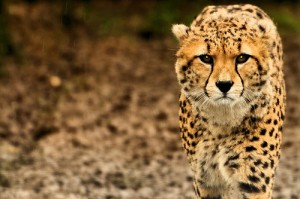Tunde Folawiyo | A guide to the big cats of Africa
Although Africa is home to some of the most fascinating species on earth, nothing quite compares to its ‘big cats’; the agility, stealth and beauty of these animals is unrivalled by any other species in the animal kingdom. Thousands of tourists travel to the African continent each year, hoping to catch a glimpse of a majestic lion or a light-footed cheetah. In this article, we discuss three of Africa’s most interesting big cats.
The lion, a favourite of Tunde Folawiyo’s, resides in the open woodlands, scrub and grasslands of sub-Saharan Africa, and is one of the world’s largest cats, second only to the tiger. Whilst most other wild cats are solitary creatures, lions are highly sociable, residing together in prides made up of about thirty. Although prides often contain many females, there are rarely more than three males.
The exact size is dependent on environmental factors, including the availability of water and food; in instances where these resources are scarce, the pride tends to be considerably smaller. The male and female members have very specific roles; the former are expected to protect the cubs and the territory, by chasing away intruders and roaring, whilst the latter do most of the hunting, because they are usually more agile than their male counterparts.
 Whilst the lion may be one of the largest cats, and for enthusiasts like Tunde Folawiyo, the most fascinating, the title of ‘fastest’ goes to the cheetah; in just three seconds, it can accelerate from 0 to 60mph. However, although its speed might suggest otherwise, the cheetah is not an aggressive animal, and mainly uses its quick-footedness to escape dangerous situations. With its small teeth and weak jaw, it is unable to fight off larger predators. Cheetahs reside in the grasslands of south-western, central and eastern Africa, and primarily consume impalas, wildebeest calves and gazelles. They are diurnal creatures, preferring to hunt either in the mornings or afternoons.
Whilst the lion may be one of the largest cats, and for enthusiasts like Tunde Folawiyo, the most fascinating, the title of ‘fastest’ goes to the cheetah; in just three seconds, it can accelerate from 0 to 60mph. However, although its speed might suggest otherwise, the cheetah is not an aggressive animal, and mainly uses its quick-footedness to escape dangerous situations. With its small teeth and weak jaw, it is unable to fight off larger predators. Cheetahs reside in the grasslands of south-western, central and eastern Africa, and primarily consume impalas, wildebeest calves and gazelles. They are diurnal creatures, preferring to hunt either in the mornings or afternoons.
Often confused with the cheetah, the leopard is considerably heavier and more elusive. They tend to live in dense forests, although they are capable of adapting to a variety of environments and climates. Due to the strength of this big cat’s musculature, it is capable of hunting prey much larger than itself, and so can often be found eating deer and boar. Unlike most cats (wild or domestic), leopards love the water, and are strong swimmers; because of this, they sometimes choose to go ‘fishing’ for their dinner, using their large paws to capture crabs and small fish. They are nocturnal, and so will usually sleep in the trees during the day, creeping out at night to look for food.
 Tunde Folawiyo
Tunde Folawiyo
Leave a Reply